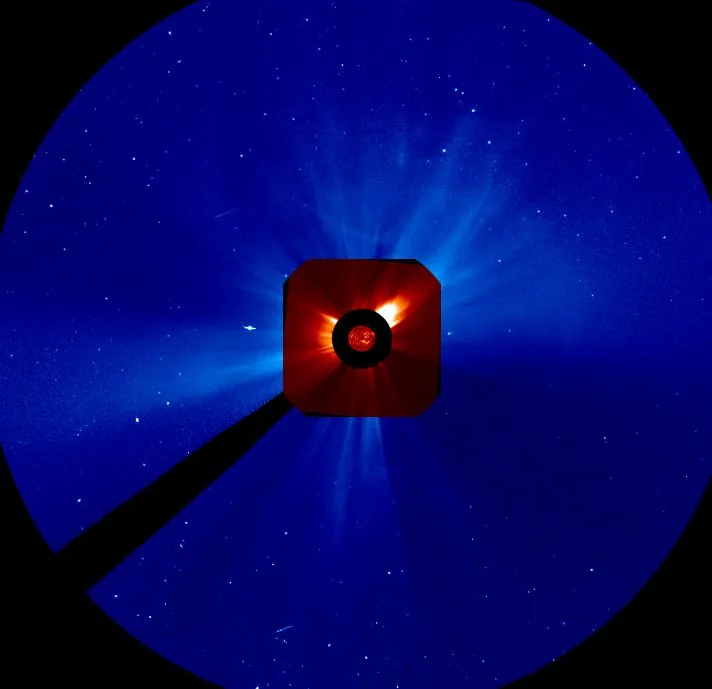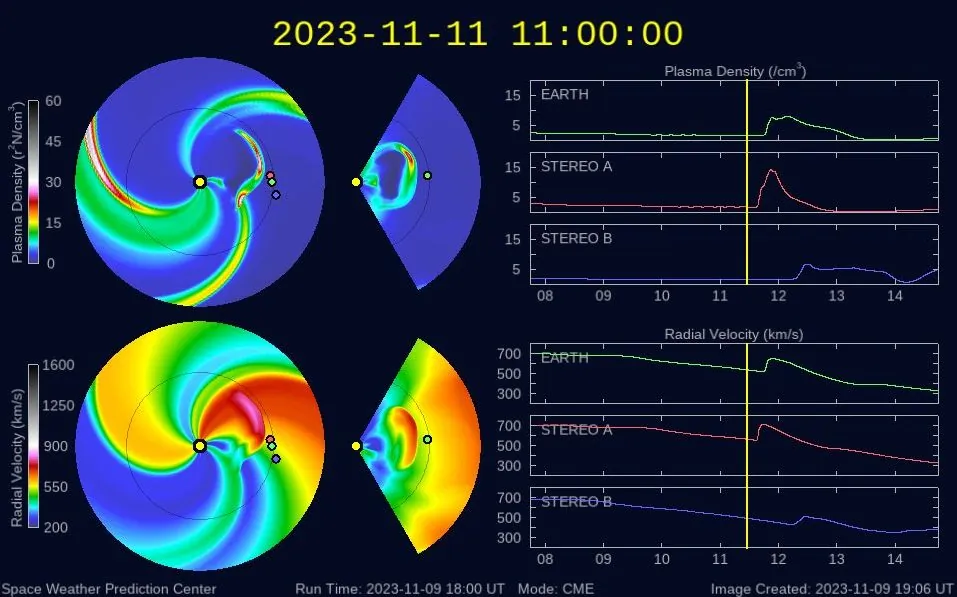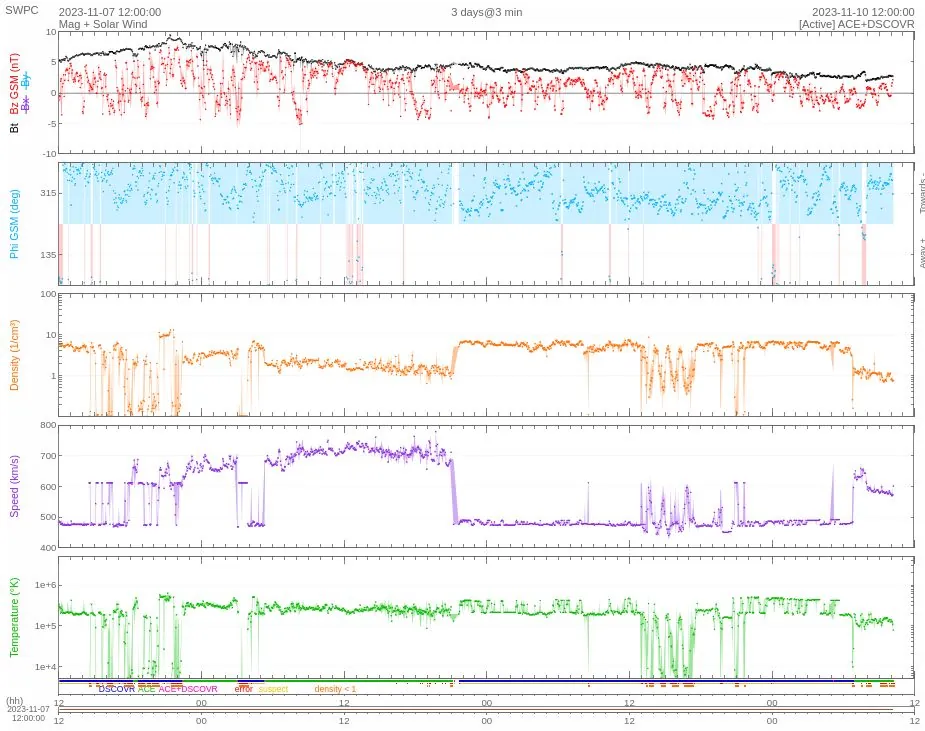A long-duration C-Class solar flare near the Sun’s center disk produced a full halo coronal mass ejection (CME) shortly after 11:15 UTC on November 9, 2023. The CME is anticipated to impact Earth around 18:00 UTC on November 11, potentially triggering a G2 – Moderate geomagnetic storm. Concurrently, a minor polar cap absorption event is affecting shortwave radio transmissions in polar regions.
Solar activity in 24 hours to 00:30 UTC on November 10 was at low levels, primarily characterized by C-class flare activity. However, the Sun managed to produce a halo CME, with impact to Earth expected around 18:00 UTC on November 11.



During the period, Regions 3477, 3481, and 3483 showed growth, while others remained stable or in decay.


The forecast predicts continued low solar activity with a slight chance of minor to moderate radio blackouts from November 10 to 12.
During the last 24 hours, the greater than 2 MeV electron flux peaked at 2 560 pfu at 15:10 UTC on November 9, indicating high levels. The greater than 10 MeV proton flux rose above background levels after 16:30 UTC, reaching around 2 pfu. Over the next few days, high electron flux levels are expected, normalizing by November 12. There is also a possibility of a minor proton event reaching the S1 – Minor threshold on November 10.
Solar wind parameters over the past day have been influenced by sustained negative polarity coronal hole high-speed stream (CH HSS). The total field strength remained steady near 5 nT, with the Bz component varying up to +/- 4 nT. However, solar wind speed readings from DSCOVR were inconsistent. Enhanced solar wind conditions are anticipated on November 11 and 12 due to the expected arrival of the November 9 CME, predicted to reach Earth around 18:00 UTC on November 11.


The geomagnetic field was at quiet and unsettled levels due to ongoing CH HSS influences. The forecast for November 10 maintains this outlook, attributing it to negative polarity CH HSS effects. However, from November 11 to 12, periods of G1 – G2 (Minor to Moderate) geomagnetic storms are likely, linked to the anticipated arrival of the November 9 CME.
References:
1 Forecast Discussion – Issued: 2023 Nov 10 0030 UTC – Prepared by the U.S. Dept. of Commerce, NOAA, Space Weather Prediction Center
Featured image credit: NASA AIA/304, The Watchers. Acquired at 10:56 UTC on November 9, 2023
If you value what we do here, create your ad-free account and support our journalism.
Large filament eruption produces partial-halo CME, impact to Earth expected on November 5
Saturday, November 4, 2023
Strong M8.7 solar flare erupts from Region 3435
Thursday, September 21, 2023
Strong M8.2 solar flare erupts from Region 3435
Wednesday, September 20, 2023
Two CMEs strike Earth, producing G3 – Strong geomagnetic storm
Tuesday, September 19, 2023
G2 – Moderate to G3 – Strong geomagnetic storm conditions forecast for September 19
Monday, September 18, 2023
Major X1.5 solar flare erupts from Region 3386
Monday, August 7, 2023
Long-duration X1.6 solar flare erupts from Region 3386; S1 – Minor radiation storm
Sunday, August 6, 2023